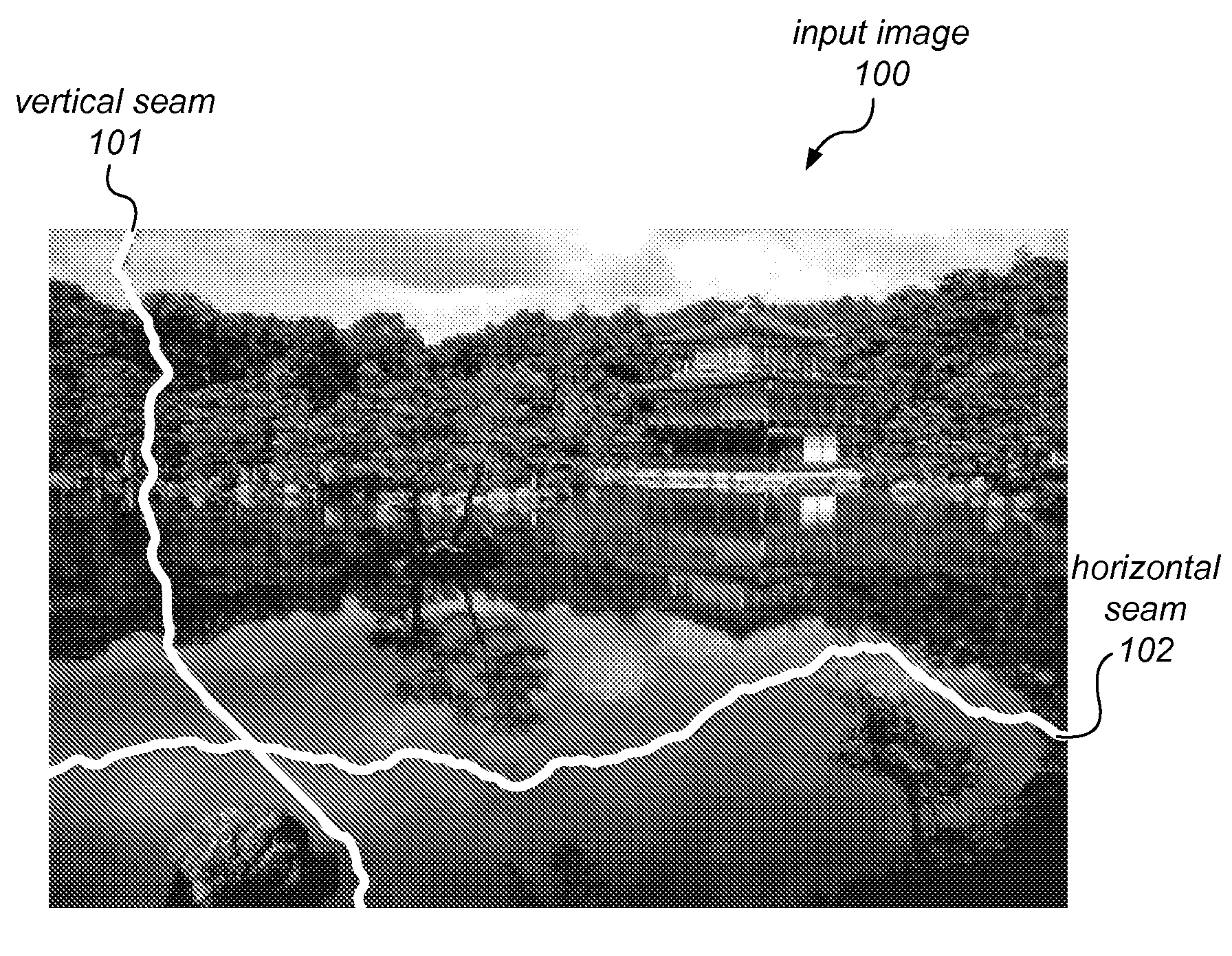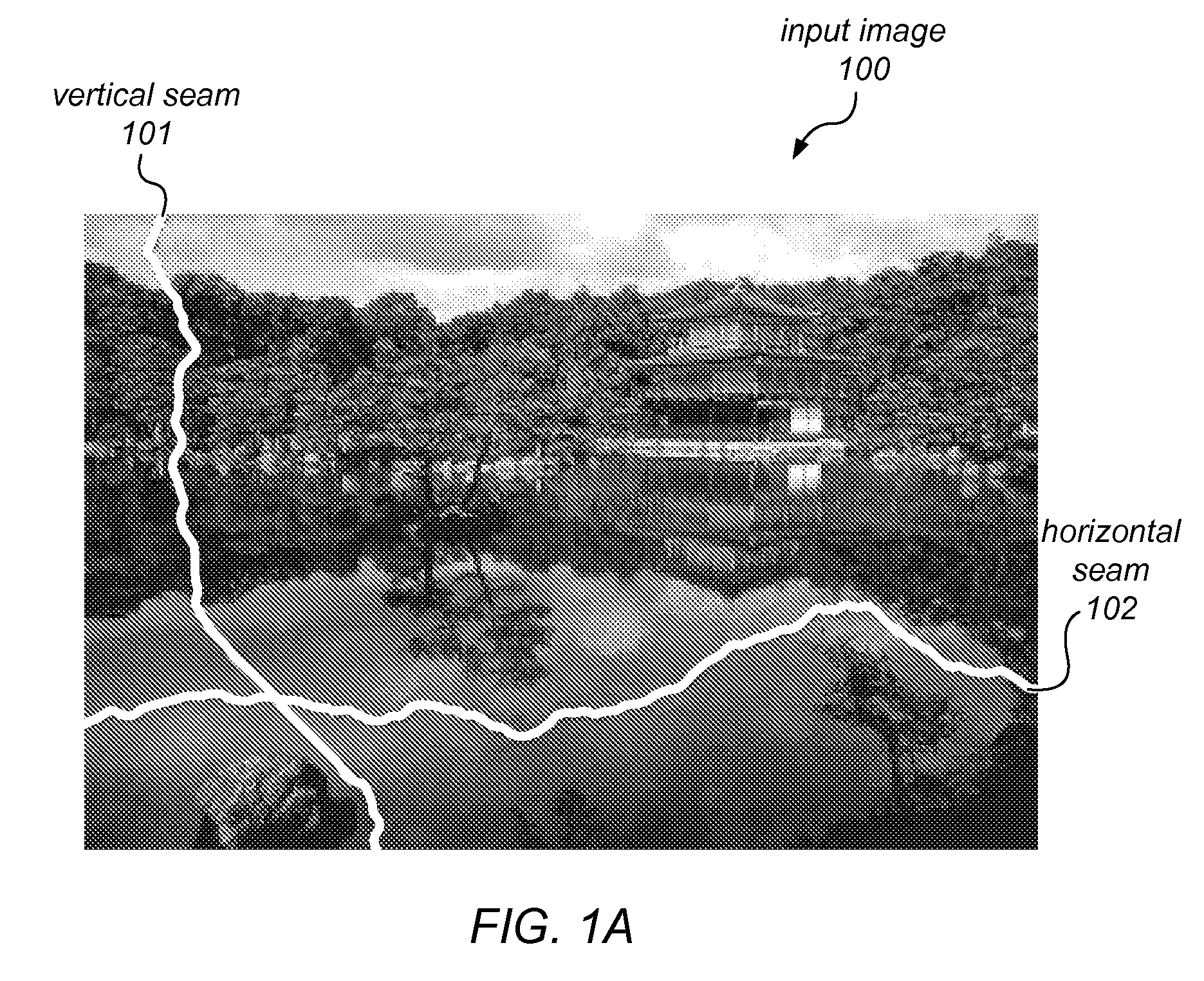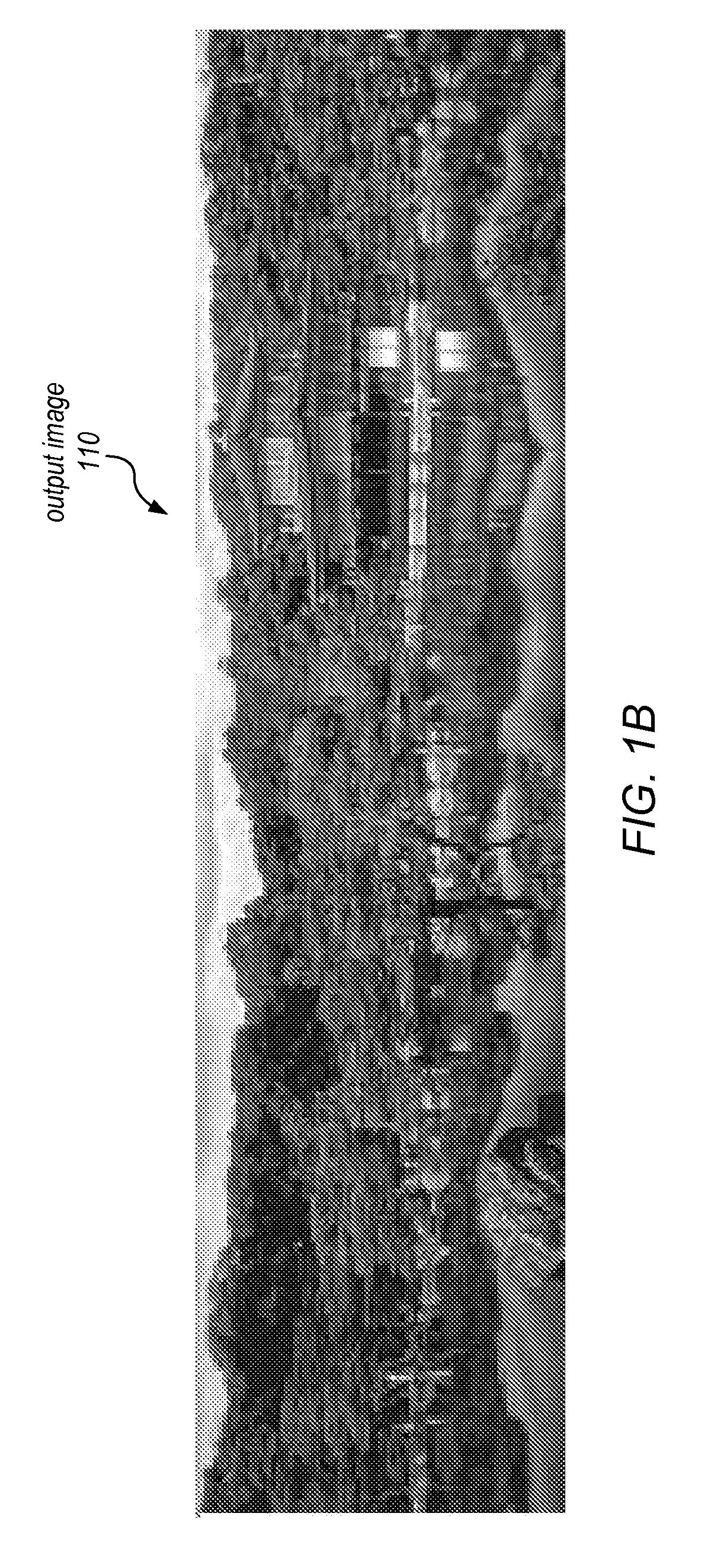Seam-Based Reduction and Expansion of Images Using Partial Solution Matrix Dependent on Dynamic Programming Access Pattern
a dynamic programming access pattern and image reduction technology, applied in the direction of electrical programme control, program control, instruments, etc., can solve the problems of affecting the quality of the input image, the input image is not easily resized automatically, and the input image is not always rigid in size, etc., to achieve the effect of low cost and low cos
- Summary
- Abstract
- Description
- Claims
- Application Information
AI Technical Summary
Benefits of technology
Problems solved by technology
Method used
Image
Examples
Embodiment Construction
[0024]Graphic applications include an ever-increasing number of image editing features, such as various filtering options and resizing operations (e.g., for cropping, expanding, or reducing an image). Currently available image resizing techniques include scaling techniques and seam-based techniques, also known as seam carving techniques. Seam carving, as described herein, may be used to increase or decrease the size of an image, in various embodiments. For example, given an image, to reduce the width, one or more seams in the image may be identified by a seam carving technique and removed from the image, while to increase the width one or more seams may be identified and replicated in the image. As used herein, the term “seam” refers to a set of pixels along a path from one edge of the image (e.g., the top of the image) to the opposite edge of the image (e.g., the bottom of the image) that satisfies the following two constraints:[0025]1) The seam is monotonic, meaning (in this examp...
PUM
 Login to View More
Login to View More Abstract
Description
Claims
Application Information
 Login to View More
Login to View More - R&D
- Intellectual Property
- Life Sciences
- Materials
- Tech Scout
- Unparalleled Data Quality
- Higher Quality Content
- 60% Fewer Hallucinations
Browse by: Latest US Patents, China's latest patents, Technical Efficacy Thesaurus, Application Domain, Technology Topic, Popular Technical Reports.
© 2025 PatSnap. All rights reserved.Legal|Privacy policy|Modern Slavery Act Transparency Statement|Sitemap|About US| Contact US: help@patsnap.com



